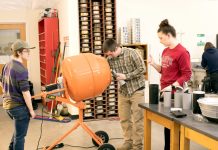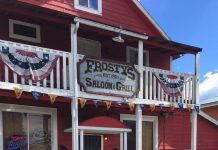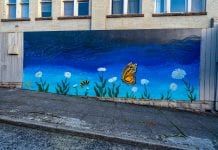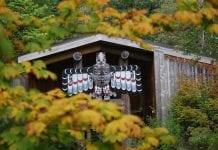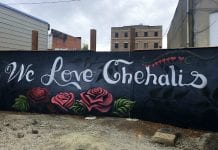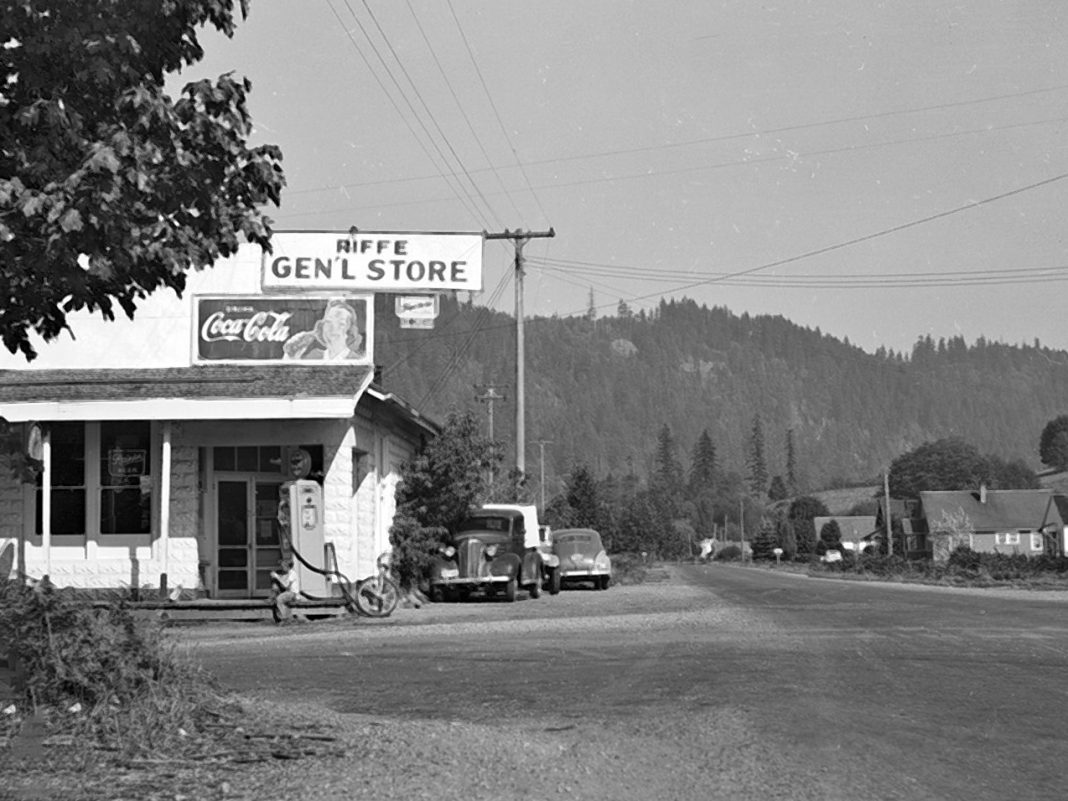While camping and fishing at Mossyrock Park with the Boy Scouts on Riffe Lake, I was fascinated by the exposed stumps along the shoreline. They looked like alien creatures that had crawled out of the water. The level of that lake had been lowered by 30 feet amidst earthquake concerns at Mossyrock Dam and  revealed a glimpse of what was once beneath the waters. At one time, massive trees grew where barren beach is now. Another parent in the troop wondered aloud whether the town of Riffe would ever be exposed. Now is the time for a true confession…I had never heard of the town of Riffe. A town submerged under the waves was more than my romantically prone imagination could bear and I needed to know more. The following is what I learned.
revealed a glimpse of what was once beneath the waters. At one time, massive trees grew where barren beach is now. Another parent in the troop wondered aloud whether the town of Riffe would ever be exposed. Now is the time for a true confession…I had never heard of the town of Riffe. A town submerged under the waves was more than my romantically prone imagination could bear and I needed to know more. The following is what I learned.
After much controversy and many lawsuits, two of which were brought about against Tacoma Power by the Washington State Department of Fish and Wildlife and the Cowlitz Indian Tribe, Tacoma Power used eminent domain to force residents to leave their homes and businesses for the construction of the Mayfield and Mossyrock Dams. In 1968, three towns, Nesika, Riffe and most of Kosmos were flooded in addition to parts of Swofford and Ajlune.

The town of Riffe, which Tacoma Power refers to as “a small pioneering community,” indeed lies at the bottom of Riffe Lake. Originally the lake was named Davisson Lake by Tacoma Power for a Tacoma Public Utilities commissioner, but was later renamed Riffe to honor the former community and the 1,500 to 2,000 people who were forced to move. In addition to residents, three cemeteries also had to be relocated. One Cowlitz Indian burial site at Nesika was not moved.
The town of Riffe was named for one of the original setters, Floyd Riffe, who was postmaster when the town formed in 1898. Floyd Riffe arrived in the area in 1895 after coming west from the Appalachians in Greenbrier County, West Virginia. Many settlers who came to Riffe originated from the same Appalachian region as folks went west seeking prosperity and then sent word back home about the opportunities in Lewis County. The way of life in Riffe as well as the mountainous topography would have reminded many migrants of their former homes in West Virginia.
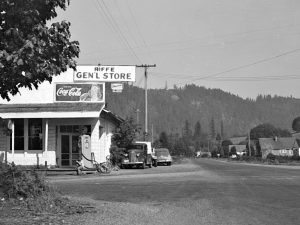
Riffe, if it existed today, would be a historically significant town with its rich pioneer and Cowlitz Indian heritage. Families in Riffe were 40 miles from the town of Chehalis, which was a rough and time consuming journey. This created a community that strived toward self sufficiency through farming and hunting. A good example of early industry in Riffe is John Hunt’s water wheel-powered grist mill on Sulphur Creek. John, who eventually carved his own millstones out of boulders he found in Sulphur Creek, would happily grind grains for local farmers in exchange for a portion of the grain.
In the early days, it didn’t take long for Riffe residents to organize. Two primitive Baptist churches were founded near Riffe, and there were at least five one-room school houses. The Freemasons and Odd Fellows also formed in the greater area. The desire to gather together and socialize with other people outweighed the difficulty of traveling long distances over poor roadways. In addition to attending church, dances and picnics were popular get togethers.
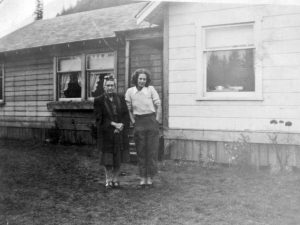
But Riffe, though it began as a pioneering community, did step into the 20th century. Buddy Rose, author of “Stories from Riffe, Wash.” lived in Riffe until he was 15 years old. I asked Rose how he would characterize Riffe.
“I guess it was more of a farming community than anything else,” said Rose. “But also a major crossroads town, with the intersection of the White Pass Highway and the highway to Tacoma meant quite a lot of traffic through the town. Before the railroad came to Morton from Tacoma, Riffe was the main town in that area.”
Growing up in the 1950s and ‘60s in Riffe sounds like it was the ideal place to be a kid except for one thing, “….everyone knew that one day Riffe would be under water and we would all have to move.”
Rose explained, “I can remember from a very early age hearing from my parents and others that it was just a matter of time before the dams would be built. But that didn’t stop me or the other kids in Riffe from enjoying our youth in our town.”
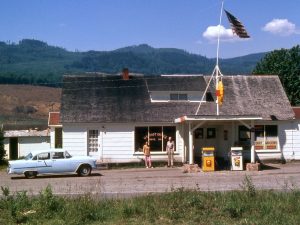
Rose has memories of hanging out around town with his friends at Sokol’s General Store or at the grocery. They liked to get a game of basketball going. Bike riding was the way to get around and it was always entertaining to throw rocks in the river at the bridge or do some fishing. It was too dangerous to swim in the Cowlitz River, but there were safer swimming holes that were popular. There was an old Baptist church that was never locked that Rose used to play in as a kid.
Rose recalls hiking with friends one day and coming across the survey line for the water level of what would one day be Riffe Lake. “Standing next to the wooden stakes and ribbons and looking down at my house and the rest of the town far below, it did not seem possible that water could fill the valley to the point where we were standing.”
Buddy and his mother left Riffe in 1963 and moved to Centralia. He drove through the area in 1967 after the last resident had left. All buildings and vegetation had been removed, there were just driveways leading to foundations and the close-knit community that once lived there was scattered.
For Further Reading:
Rose, Buddy: Stories from Riffe, Wash. Gorham Printing. Centralia, WA. 2013 (Copies are available at the Lewis County Historical Museum)
A new book is also in the works by Anni Evans called Riffe & Nesika of the Cowlitz River Valley Heritage.









